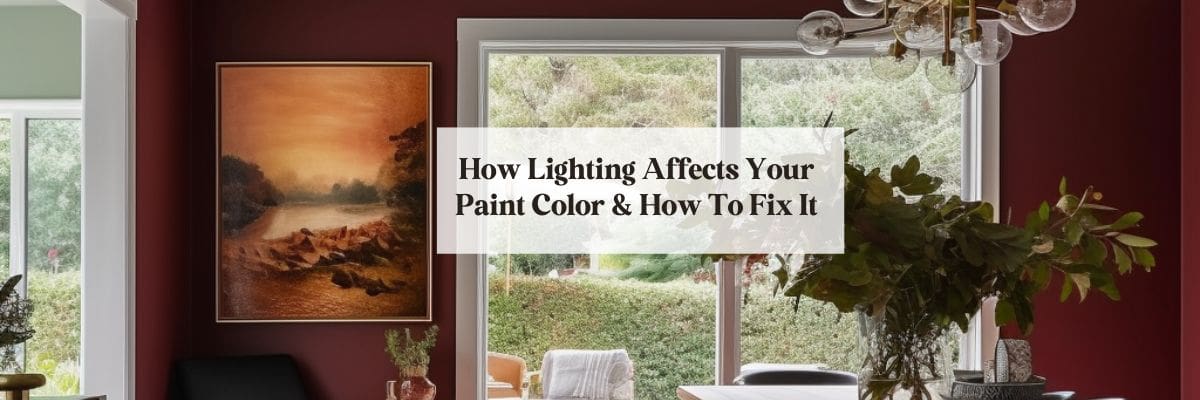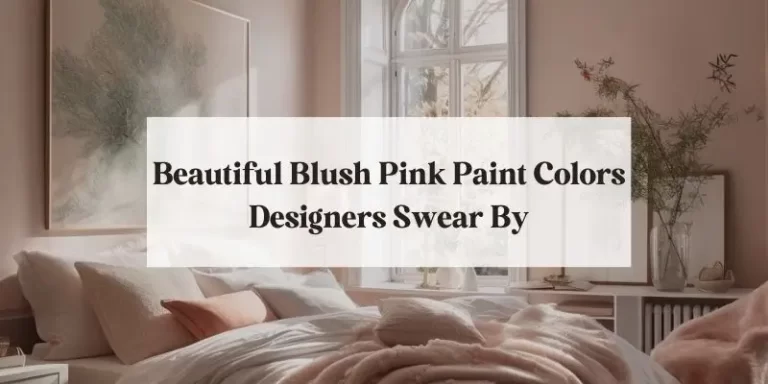Why Lighting Matters
So you want to paint your room. You’ve got a dream. You’ve got a plan. Now to pick the perfect color. But how do you know which color will look just right in your room?
It all depends on your lighting of course! Unless you’re transforming your mom’s basement into the mancave of your dreams, you probably have at least one window in your room.That one window matters, big time.
Whether you have one window or more (lucky you) your natural light and your indoor lighting can make or break your color selection. We’re going to walk you through how lighting affects your wall color so you can pick the right color, the first time. If you’ve already painted your wall, we’ll learn how to fix it when things go off course.
If you are starting fresh and want a full tutorial on how to pick the perfect color for your space, check out our post, “Expert Guide to Nailing the Perfect Color”. Where we go step-by-step through the color selection process.
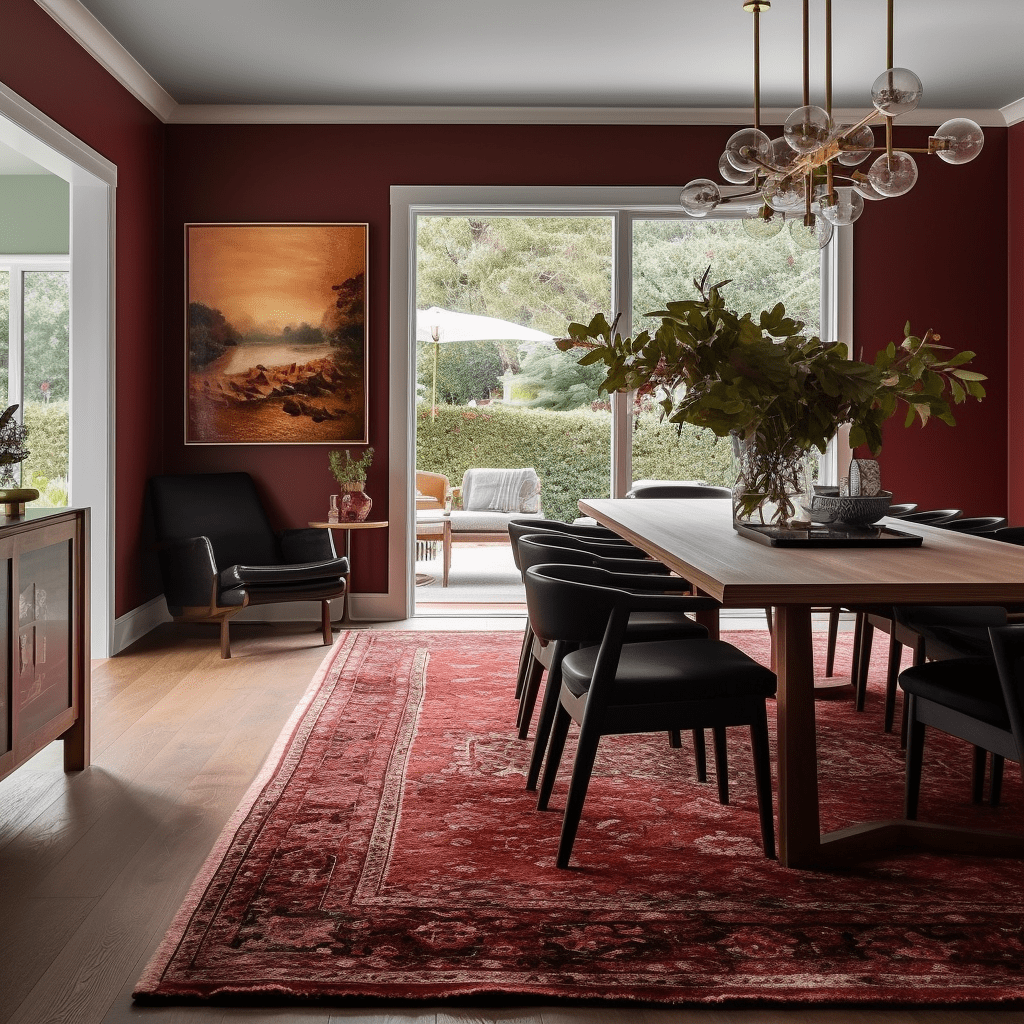
Things That Affect Your Paint Color
Anatomy of Paint Color
First things first. To understand what is happening when light and color mix, we need to know the basic anatomy of paint color.
All wall paints have their own specific color formula. Each paint company has a highly guarded color code system, with their own color codes. If you’ve ever looked closely at the label on your paint can, you will see a series of letters with a dash and then a number. This information is your paint code, and it’s how the hardware store knows how to mix your exact paint correctly.
Because your paint color is a mixture, and rarely the pure form of the color itself, the color will have undertones of mixture “under” the main color you see when looking at paint swatches.
What is An Undertone?
Undertones are the subtle color differences in a paint that comes from mixing two or more colors together. The color you see on a paint swatch is what’s called your “mass tone.” The mass tone is the most prominent color you see. The undertone is the secondary color or colors in the formula that are mixed together to make the main color.
The closer your undertone is the mass tone, the truer your color will be. For example, a true red will have a similar mass tone and undertone. A burgundy red will have a blue-purple undertone, while a fire engine red will have an orange undertone.
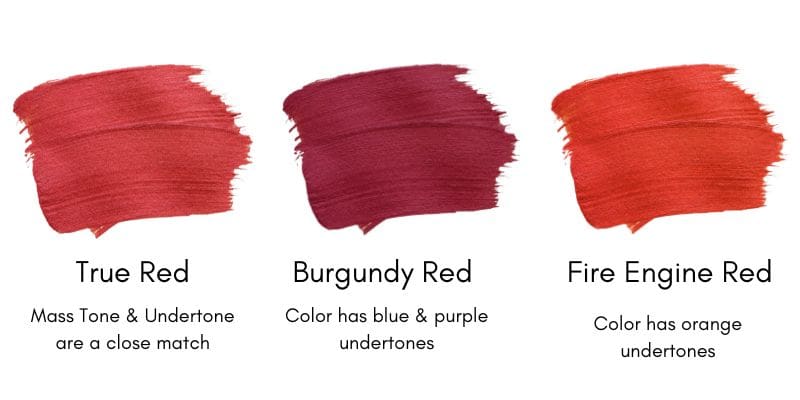
Warm colors have pink, orange, or yellow undertones. Cool colors have blue, green, or purple undertones. So how do you find the undertone in your wall paint color?
Depending on the direction of your natural light, and the color temperature of your light bulbs, the undertone in your paint can become more prominent, causing your beautiful wall color to look more yellow, green, or blue.
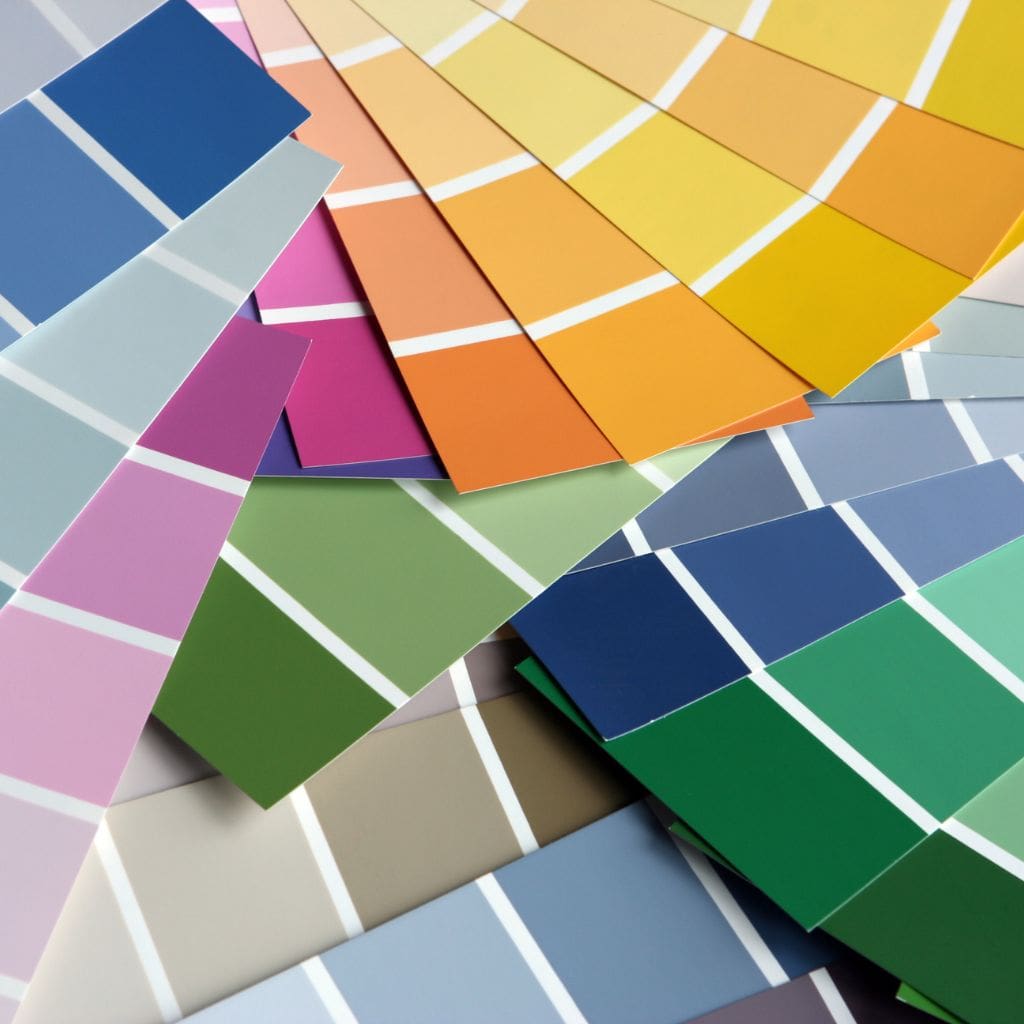
Compare And Contrast Paint Colors
Undertones really come into play when picking neutral colors or whites. There are so many whites, taupes, and beiges, they can all start to run together and look the same. The easiest way to identify the undertone in your paint color is to compare it to the purest version of that color.
If you are looking at whites, place your color swatch against the pure white in the color deck. Your color will quickly reveal if it has a warm or cool undertone. Does it look more pink, yellow, or maybe it’s reading a little green? You’ll know that whatever undertone color you see against the pure color will become more obvious once you paint the entire room.
If you can’t find the pure version of your color, look at the paint strip. Most paint strips have 7 variations of the same color formula, from lightest to darkest, on the same strip.
Look at the darkest color on your strip to see if your color leans more warm or cool. Compare that color strip to other swatches in the same color family to get a better understanding of what undertones are present in your paint color.
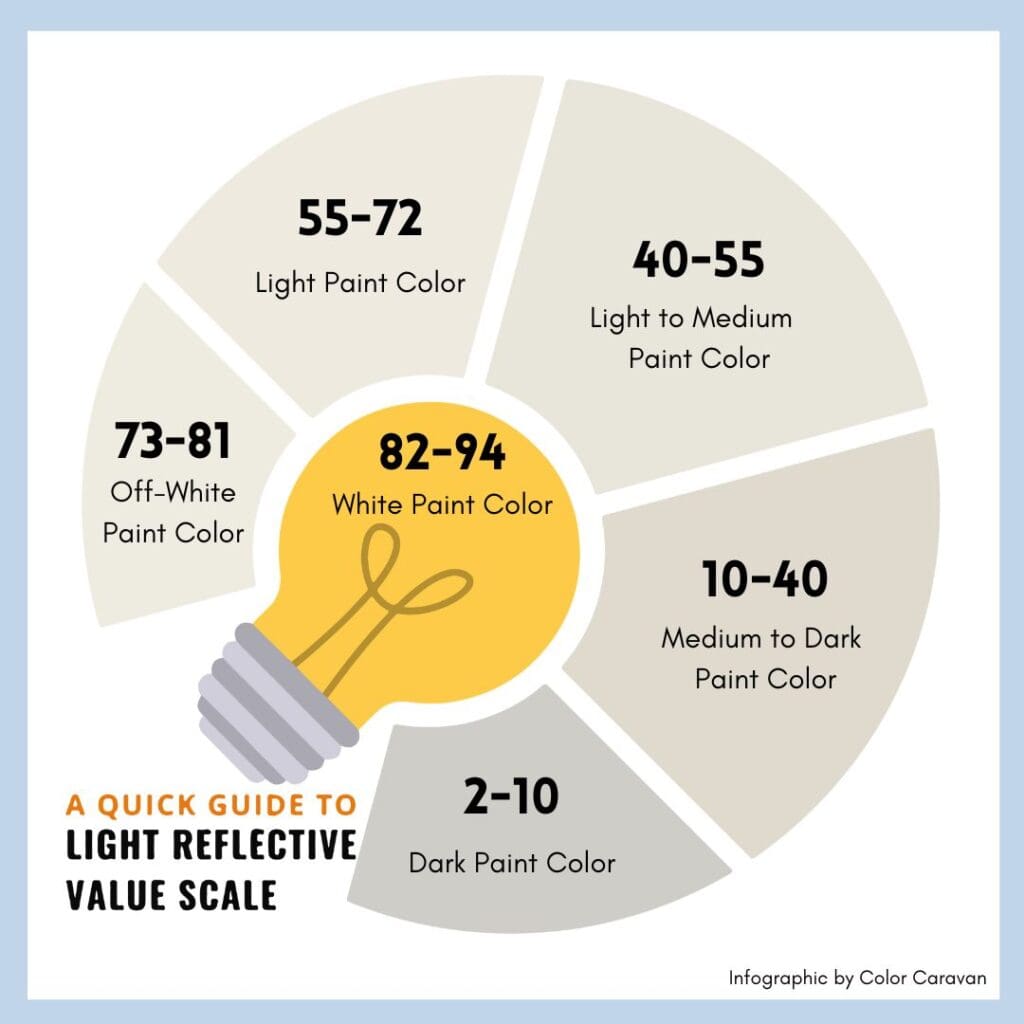
Light Reflectance Value and Your Paint Color
Another factor in your paint color is the LRV. LRV stands for Light Reflectance Value. The Light Reflective Value is a numerical scale system that tells you how much light your color reflects. Pure black is 0, pure white is 100. Every color will have what’s called an LRV number associated with the color.
The lower your number, the less light your color reflects, and the darker the color will be. The higher the number, the lighter (or brighter) your color is, and the more light it will reflect. In reality, no paint color has an LRV of 100 or 0. The purest white paint color has an LRV of 94, and the blackest black paint has an LRV of 3.
Okay, so why does this number matter, and how do you use it?
If you have a room with minimal natural light, you’ll want to select a color with a higher LRV. This lighter color will make your room look brighter, and simulate a “daytime” feel to the room.
Darker colors, colors with lower LRV numbers, will make the room feel cozy and wrapped in the mood of that color.
LRV can also be used to help with energy efficiency. Colors with a higher LRV will bounce back more light. That means you won’t have to use as many light bulbs or light fixtures to provide adequate lighting for the room. It also means it will take less energy to keep the room air conditioned since lighter colors don’t absorb as much heat from sunlight.
Look on the back of your paint swatch to see if the manufacturer has included the LRV. You can also find the LRV number on the specific color page on the manufacturer’s website.
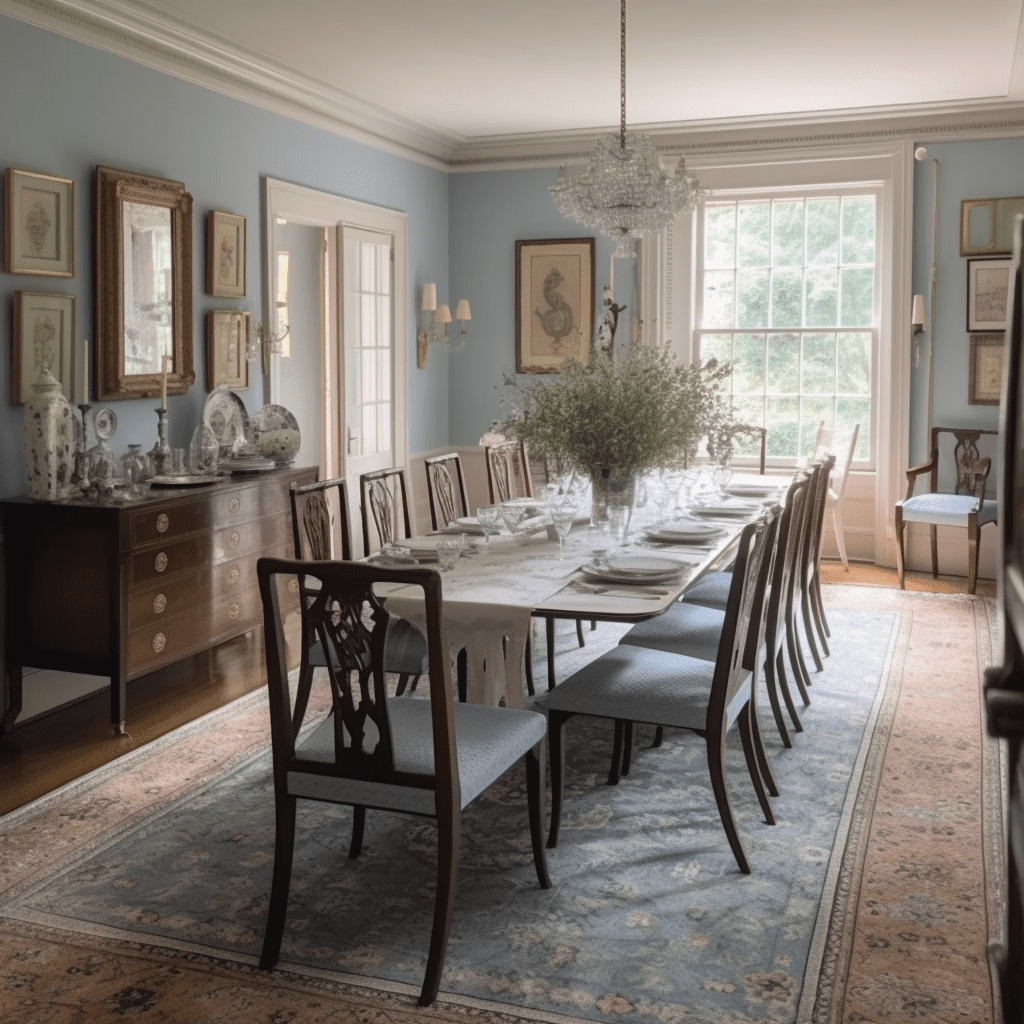
How Lighting Affects Your Wall Color
We usually don’t think that light has different colors. The sun is the sun, right? Wrong! The direction that your light comes from has different undertones in it. The time of day also has different colors in the light. Think how beautiful the light at sunset is compared to high noon light.
Here is a quick breakdown of how light direction affects your wall color.
Understanding The Direction Of Your Light
North Facing Light
North-facing light will be grayer and have a cooling effect on your paint colors. Northern light will pick up on any blue undertones in your paint. They will make blue, grays, greens and some whites bluer. North facing light can wash out lighter colors. Bold colors show up better in North facing rooms. Make sure to color test and lean towards more warmer tones if you have a north-facing light source.
South Facing Light
South-facing light sources are warmer and will pick up more orange and yellow undertones in your paint colors. South-facing rooms don’t get a lot of morning light and can feel dim until they brighten in the afternoon. Light colors can get very bright in the afternoon. Balance out this extra bump of yellow with a neutral gray or cool tonal base in your paint.
East Facing Light
East-facing rooms have inconsistent lighting. They’re more bright and warm in the mornings, and cooler and gray by midday and in the evenings. Balance these rooms out with a warmer color that can look good in both scenarios.
West Facing Light
West-facing rooms typically begin with subtle light in the mornings, and graduate to more intense, warm light by the afternoon. Western lit rooms can handle both cool and warm colors, but less bold, softer tones will work better in the stronger afternoon light.
Remember that any color will look brighter when in direct sunlight. If you have a room with abundant natural light, look towards more tonal colors than brighter colors and whites so your room doesn’t suddenly become harsh or blinding.
How Your Light Bulb Affects Your Wall Color
Your artificial lighting also affects your wall color. If you’ve ever stood in the hardware store struggling to pick between soft white, warm white, bright white, and daylight light bulbs, you are not alone.
Let’s briefly discuss some basic lighting vocabulary to understand the anatomy of your light bulb.
Light Bulb Vocabulary
Lumens
Lumens is how bright your light bulb is. This means that the higher the lumen number on your bulb, the brighter your bulb will be. Every bulb has a lumen rating.
Wattage
The wattage, or watts, is the amount of energy or power your bulb consumes. If you’ve switched to LED bulbs, which I encourage you to do, you should focus on lumens more than wattage when selecting the correct bulbs for your paint color.
Kelvins
The Kelvin rating tells you the color temperature of your bulb. The Kelvin rating is a color temperature scale from 2700 – 6500. The lower the number, the warmer your light will look. A higher Kelvin rating will emit a cooler light.
Light Bulb Color Temperature And How To Use It
Here’s an easy guide to the different colors in light bulbs and how they affect your wall color.

Soft White Light Bulbs
Soft White light bulbs have a Kelvin rating 2,700 -3,000 Kelvins. Soft white is a warm, yellowish light that mimics incandescent bulbs. This light gives off a cozy, warm glow and looks great in living rooms, media rooms, dens and bedrooms.
Warm White Light Bulbs
Warm White light bulbs have a Kelvin rating of 3,000 – 4,000 Kelvins. Warm white is exactly what it sounds like. Warm white light bulbs have a yellow tint to the light, but not quite as much as soft white. Warm whites look best in dining rooms, kitchens, and home offices. Depending on the amount of lights you have, warm whites will need to be accompanied by additional task lighting in work spaces like home offices.
Bright White Light Bulbs
Bright White light bulbs have a Kelvin rating of 4,000 -5,000 Kelvins. Bright white bulbs have a mix of white and blue tones. Bright whites are more energetic, but less cozy feeling. Bright white light is great for kitchens, under counter task lighting, home offices, bathrooms, vanity lighting, and chrome or white light fixtures.
Daylight Light Bulbs
Daylight light bulbs have a Kelvin rating of 5,000 – 6,500 Kelvins. Daylight bulbs have a blue cast to the light. Daylight bulbs are best for workspace environments like garages, bathrooms, or spaces with minimal natural light that you need to see clearly for close up work or reading. Daylight bulbs can cause eye strain if paired with a high lumens because the blue light will be too bright and harsh on the eyes over long periods of exposure.
Test Your Lighting With Paint Samples
Now that you understand your lighting, you can begin to pull some paint samples. Tape up several samples on your room wall, and check how the color reads in the morning, noon, and night. Pull off any swatches that seem off. Take notice if your color leans towards cool or warm undertones, and think about the direction your light is coming from.
After you’ve narrowed down your paint swatches to 1-3 options, head to the hardware store to pick up some sample paint. Most paint stores offer sample sizes for less than the cost of a regular quart. Ask your paint technician if they can give you a sample size of your paint colors.
Take your sample paints home and paint a good size paint swatch on all four walls. Paint at least a 12” square or bigger, so you can get an accurate read on your color. A tiny paint swatch won’t give your eye enough information to read how it reacts to your lighting or the undertones that are in your color. Bigger is better, right?
If you have a wall that gets direct sunlight from a window, paint two swatches on that wall, one in the area of direct sunlight, and one next to it in shadow.
Here is the critical part. Check your paint swatches in the morning, the afternoon, and evening after sunset when it’s dark outside.
Why?
Morning light is cooler, think more blue or gray, than midday and afternoon sunlight. Midday and afternoon sunlight casts a warmer tone than when it’s dark outside. Your color will change depending on the time of day and amount of light it’s exposed to.
Take time to look at each color closely during these three periods of the day. How does your color change? Trust me, the extra time is worth the effort.
Color Correcting Your Wall Paint Color
If your color looks gray, purple, or blue, you have a cool undertone in your paint. If your color looks red, pink, yellow, or orange, you have a warm undertone in your paint. So what do you do? Well, there’s an easy way, and if that doesn’t work, there’s a…less easy way.
Color Correcting With Light Bulbs
Let’s take the easy way first. Now that we know about lighting and light bulbs, we can use this information to micro-adjust our wall color.
If you have a North or East facing room or minimal natural light, and your color is looking blue, green, or purple, start by switching out your light bulbs to a warmer bulb. Go for warm white, or soft white light bulbs. If you have minimal artificial lighting in your room, bump up the lumens in your bulb so they are brighter, but still cast a warmer light.
Say you have a South or West facing room or that room has abundant natural light. But your wall color is looking pink, orange, red, or yellow. Try switching your light bulbs to a cooler light like bright white or daylight bulbs. Use the cooler color light bulbs with lower lumens. You don’t need to add more light to the room since you have bright South or West facing light, but instead you are color correcting your existing light.
If you have adjusted your lighting and your color looks great on all four walls, at all three times of day, congratulations, you’ve found your perfect wall color!
Color Correcting Your Wall Color
If you have tried adjusting your light bulbs and your wall color still looks bad, it’s time to go back to sampling. Think about what wasn’t working with the color or colors you chose. Was your wall color too gray, blue, green or purple? If so, you will need to adjust to a color with a slightly warmer undertone. If they were too red, pink, orange, or yellow, you’ll need to modify it to a color with a slightly cooler undertone.
When resampling look around at your color swatch’s neighbors and you will see similar colors that lean either cooler or warmer directly to the left or right of your color swatch. Use this information, paired with what you learned about your lighting, to tweak your color until you find the right one.
If you are struggling to get it right, don’t hesitate to ask the paint technician for help! There is no one more valuable than a knowledgeable paint mixer.
I go to a Benjamin Moore paint store and the people who work there have pulled my fat out of the fryer many times, so much so that I call them my paint boyfriends. They have helped me match old paint that I didn’t have the formula to anymore, and also guided me on color correcting paint mistakes of my own.
Conclusion
Knowing how your paint is mixed, what undertones are, and how light reflectance value affect your color are all critical to picking the right wall color. We’ve paired that information with understanding how the direction of your light can cast warm or cool tones on to your color, and how the color temperature of your light bulbs can enhance or color correct unwanted undertones in your paint.
I hope that you can now confidently assess the lighting in your room, compare and contrast your paint swatch to other samples, and easily and efficiently pick the right wall color for your space, the first time.
If you need help selecting the perfect color for your space, I am here to help! I offer E-Design services for color selections, space planning, furniture and lighting options, tile design, and more! Email Nicole at hello@colorcaravan.com to discuss your project.

